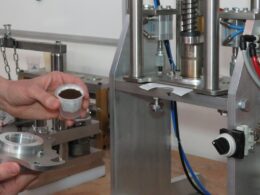Introduction to the Resin Market Dynamics
The resin market is experiencing notable fluctuations, marking a significant phase for both commodity and engineering resins. With December setting in, the downward trend in resin pricing has become evident, catching the attention of market analysts and industry stakeholders. Purchasing consultants at Resin Technology, Inc. and experts from The Plastics Exchange have highlighted this price trajectory, projecting its continuation into the early months of the subsequent year. This article explores the factors influencing these changes and what they signify for various resin types.
The economic dynamics affecting resin prices often correlate with broader market conditions, such as oil price fluctuations. With oil exceeding $90 per barrel at times and dropping to $65, the impact on resin is direct and swift. This correlation prompts businesses and consumers to anticipate further price adjustments, strategizing their purchase plans accordingly. As such, understanding these dynamics becomes crucial for effective budgeting and risk management in industries reliant on resin products.
Polyethylene (PE) Price Declines and its Implications
Polyethylene (PE) prices witnessed a drop of 3¢/lb industry-wide by November’s close, with expectations for additional relief going into the new year. Mike Burns, Vice President for PE at RTi, correlates the domestic resin price trajectory closely with that of oil. When oil trades above $90 compared to $65 per barrel, it intrinsically alters the operational strategies of resin markets, creating a ‘different ballgame,’ as he describes. As selling prices become competitive against lower global price levels, it puts significant pressure on domestic markets to adjust.
The PE spot market, although active with a 3¢/lb drop, saw PE export prices plummet as suppliers adjusted their pricing to maintain competitiveness. In response to these shifts, buyers have adopted a more conservative purchasing approach, only buying as needed and in anticipation of even lower prices. This trend results in a buildup of supplier inventories, pushing domestic prices to likely bottom out sometime after the Chinese New Year. Burns expects 2014’s demand to surpass GDP growth, but cautions it is contingent on competitive domestic versus global pricing structures.
Polypropylene (PP) Trends and Market Behavior
Polypropylene (PP) prices experienced considerable volatility, eradicating an October increase with a 5¢/lb November decrease. Scott Newell from RTi attributes this movement to the parallel fluctuations in propylene monomer prices, anticipating further reductions in the coming months. Despite a slightly above-average spot trading activity, material availability remains constrained, impacting supplier strategies and buyer expectations.
The tight market for PP doesn’t necessarily translate into a buyer’s market, as Newell points out that production output is being carefully aligned with demand. This management approach ensures a balance, anticipated to lead to increased buying activity as prices continue to fall. Though some margin expansion opportunities surfaced in the early fourth quarter, the market outlook for PP is stabilized by improved monomer availability, aided by developments such as the inauguration of Dow’s new “on-purpose” propylene plant.
Polystyrene (PS) and Polyvinyl Chloride (PVC) Price Movements
In the polystyrene (PS) segment, price drops of 3¢/lb in November were augmented by supplier-driven decreases in December. Mark Kallman of RTi attributes these declines largely to drastic reductions in benzene and ethylene contract prices. With corresponding spot prices trailing December contracts, further decreases were anticipated. Suppliers reacted to the swift market changes by adjusting production to align with new price expectations.
Conversely, PVC prices saw a 2-3¢/lb decline in November with projections for continued drops. Kallman remarks on the cross-influence of decreased ethylene and chlorine costs and the impact of competitively priced global PVC markets. High domestic prices restrict export potential, although potential further price cuts could open up this avenue later. The ongoing recalibration in the domestic PVC market underscores the necessity for market vigilance as global trends exert influence.
The Competitive Landscape for Engineering Resins
The engineering resin market isn’t immune to these trends, as seen with ABS and nylon pricing adjustments. ABS prices trended downward by approximately 2-4% in the fourth quarter, a response to declining benzene, butadiene, and styrene costs. Despite moderate demand growth, the competition from lower-cost resins, particularly polypropylene, demands attention from stakeholders.
Nylon prices varied, with Nylon 6 encountering a 2-4% drop, influenced by benzene’s price trajectory, while Nylon 66 remained flat yet pressured by cost drops in benzene, propylene, and butadiene. Market stakeholders anticipate further price reductions contingent on contractual agreements and raw material sourcing. The resin market is in a transitional phase, signaling opportunities for strategic adjustments in production and procurement strategies.
Conclusion and Future Outlook
The broad drop in resin prices across various segments showcases the intricacy of global supply chain influences and raw material pricing. These fluctuations demand proactive strategizing from industry players to maintain competitiveness and capitalize on price movements. As the market continues to respond to global economic factors and raw material availability, the outlook for resin prices remains dynamic.
Industry participants are encouraged to stay informed and adapt their strategies accordingly. Monitoring market updates and engaging in strategic purchasing can mitigate risks and align with long-term business goals. Readers are invited to follow updates on platforms like the Plastics Technology blog for ongoing insights into resin pricing trends.
#Broad #Drop #Resin #Prices
Última atualização em 25 de abril de 2025






